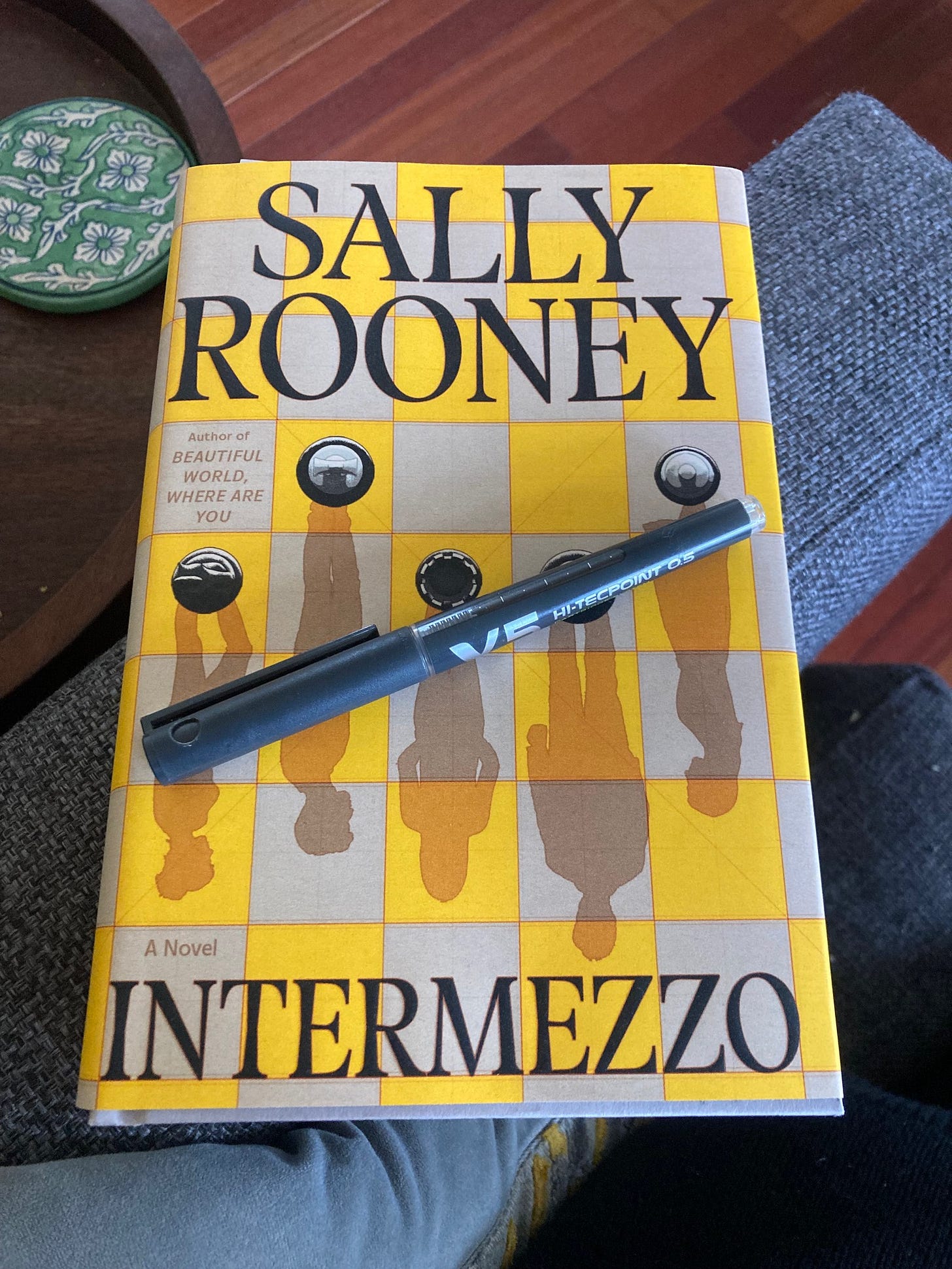Desire as a theme is something that links the novels of Sally Rooney and Susan Minot. The authors, separated by a generation, return again and again in their works to the unruly nature of desire, the way it overruns the bounds of society and propriety. In Intermezzo (Rooney) and Don’t be a Stranger (Minot) the authors again explore the lawless draw of desire only to find, running quietly alongside desire’s fierce undertow, an equally powerful steady stream of love.
In Intermezzo, a sumptuous novel, brothers Peter and Ivan, in the wake of their father’s death, are left to reckon with their shared loss, their low-level animosity towards each other, and the arrival in their lives of complicating women. Peter, a handsome, successful and idealistic lawyer in his 30s, was once half of a perfect couple. Peter and the equally exceptional Sylvia glowed, each one’s brilliance and beauty magnifying the other’s. After a devastating car crash, Sylvia suffers from an injury similar to that of Jake Barnes in The Sun Also Rises: vague and incurable, but understood to render her unable to have/enjoy sex. Although they have been broken up for years, Peter feels himself pulled back to Sylvia and the memory of their past perfection, even as he feels himself propelled into a powerful sexual relationship with a Naomi, a reckless college student who trades her desirability online for money. Ivan, a chess prodigy younger than his brother by more than a decade, is right on the cusp of falling into a life of internet-enabled misogyny and misanthropy when he meets Margaret, a quiet, lovely arts administrator more than a decade his senior, closer in fact to his brother’s age. Rooney structures this wonderful novel like a chess game: she moves the characters and puts them in different relations with one another, then writes gorgeous, meditative analyses of the new positions the characters find themselves in. If the characters here are initially surprised by desire, it is desire’s impossible demands that eventually help them understand the steady, sometimes unsexy, equally surprising force of love.
The relationship in Susan Minot’s novel Don’t be a Stranger is less complicated, more primal, and again involves a notable difference in age. Our 52-year-old protagonist Ivy, author and writing professor, falls heedlessly into a passionate relationship with Ansel, a musician two decades her junior. “Relationship,” though, is not quite the right word, and it is this descriptor that Ivy and the object of her desire do battle with over the course of the novel. Ivy, initially drawn to the freedom a purely sexual relationship promises, struggles to separate desire and love. But a late crisis in the novel makes her re-examine the animating forces in her life, the forces that pull her back and forth between the thrill of disorder and the comfort of order. We could say both Intermezzo and Don’t be a Stranger are about lust, the question of age and sex and impropriety, the power and perniciousness of social taboos. And they are. But you’ll find much more (especially in Intermezzo) here, too: aching and edifying meditations on what it means to be lonely and what it means to be loved.



